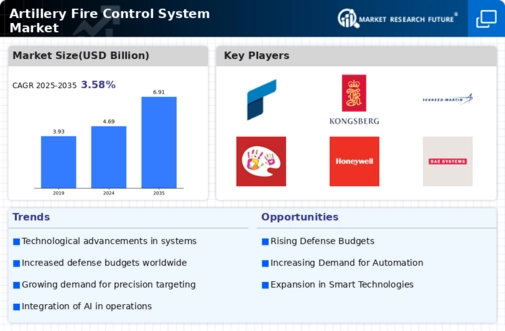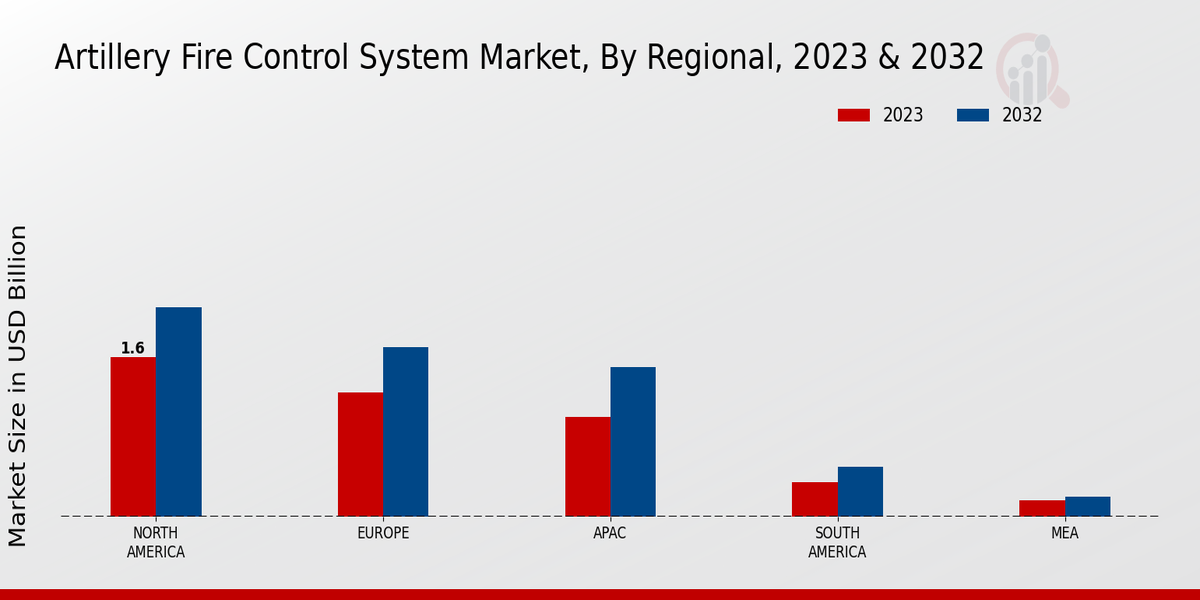Increased Defense Budgets
Global military expenditures are on the rise, driven by geopolitical tensions and the need for modernization. Countries are allocating larger portions of their defense budgets to enhance their artillery capabilities, which directly impacts the Global Artillery Fire Control System Market Industry. For example, nations like the United States and India have significantly increased their defense spending, focusing on upgrading their artillery systems. This trend is expected to sustain the market's growth trajectory, as investments in advanced fire control systems become a priority for military planners. The anticipated growth from 4.69 USD Billion in 2024 to 6.91 USD Billion by 2035 underscores this trend.
Market Growth Projections
Technological Advancements
The Global Artillery Fire Control System Market Industry is experiencing rapid technological advancements, particularly in automation and digitalization. Innovations such as integrated sensors and advanced computing capabilities enhance targeting accuracy and operational efficiency. For instance, systems that utilize artificial intelligence for predictive analytics are becoming increasingly prevalent. These advancements not only improve the effectiveness of artillery units but also reduce the time required for target acquisition. As a result, the market is projected to grow from 4.69 USD Billion in 2024 to 6.91 USD Billion by 2035, reflecting a compound annual growth rate of 3.58% from 2025 to 2035.
Rising Geopolitical Tensions
The Global Artillery Fire Control System Market Industry is significantly influenced by rising geopolitical tensions across various regions. Conflicts and territorial disputes prompt nations to enhance their military capabilities, particularly in artillery systems. For instance, ongoing tensions in Eastern Europe and the Asia-Pacific region have led countries to invest heavily in modernizing their artillery fire control systems. This focus on preparedness and deterrence is likely to drive market growth, as nations seek to maintain a strategic edge. The projected increase in market size from 4.69 USD Billion in 2024 to 6.91 USD Billion by 2035 reflects the urgency of these developments.
Growing Demand for Precision Warfare
The shift towards precision warfare is a key driver of the Global Artillery Fire Control System Market Industry. Armed forces are increasingly prioritizing accuracy and efficiency in their operations, which necessitates advanced fire control systems. Technologies that enable precise targeting and minimize collateral damage are in high demand. For example, systems that integrate GPS and laser-guided munitions are becoming standard in modern artillery units. This growing emphasis on precision is expected to contribute to the market's expansion, with projections indicating a rise from 4.69 USD Billion in 2024 to 6.91 USD Billion by 2035.
Emerging Markets and Defense Collaborations
Emerging markets are becoming increasingly important in the Global Artillery Fire Control System Market Industry. Countries in regions such as Asia and the Middle East are enhancing their defense capabilities through collaborations with established defense contractors. These partnerships often lead to technology transfers and local production of advanced artillery systems. For instance, nations like Saudi Arabia and Brazil are investing in domestic production capabilities, which is expected to stimulate market growth. As these emerging markets develop their artillery fire control systems, the overall market is likely to benefit from increased competition and innovation.















